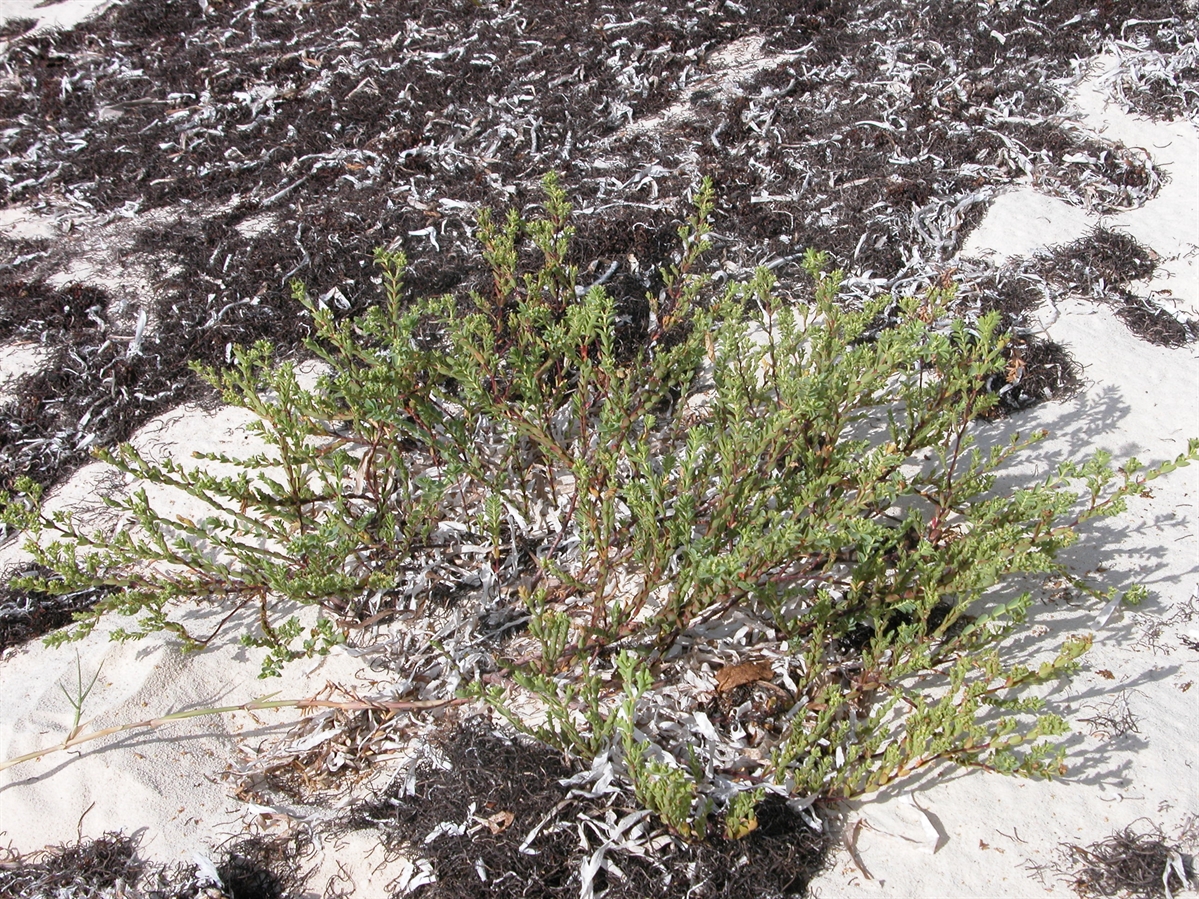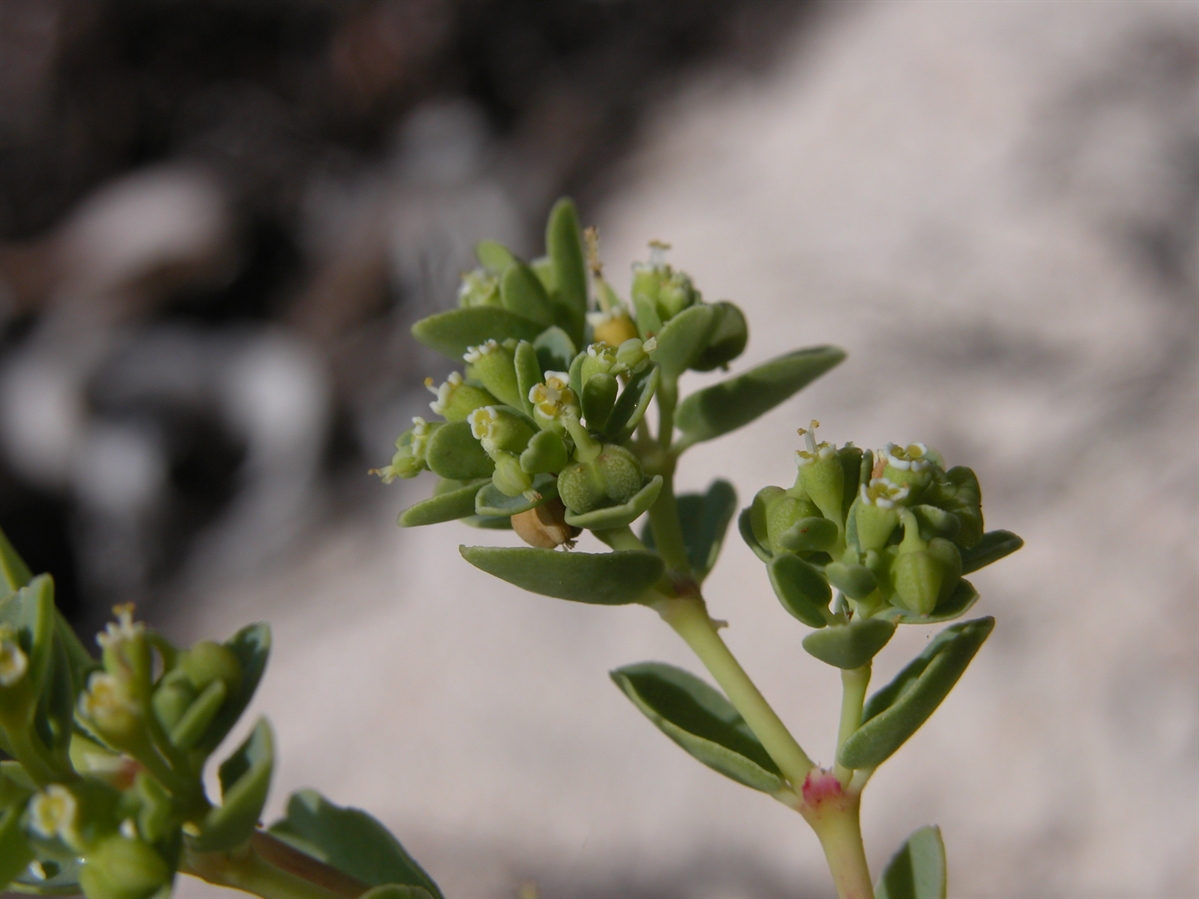Habit: Euphorbia mesembryanthemifolia grows as erect or sprawling semi-succulent, glabrous herb to 1 meter in height (typically shorter). The leaves are arranged oppositely, ovate to elliptical, to 1 cm in length with an acute leaf apex and entire leaf margin. Often the leaves will be folded and have a reddish color. At the base of the petiole are 2 triangular and hairy or lobed stipules. The vegetation produces a thick, milky sap.
The incomplete, imperfect, monoecious, actinomorphic, flowers are arranged in tight clusters of cyathia that have tan glands along the edges and occur in the axils of leaves. The lip of the cyathia is white. There is no calyx or corolla. Staminate flowers are reduced to a single stamen. Carpellate flowers are reduced to a single superior carpel, each with 3 locules and numerous seeds. The fruit is a capsule at maturity that splits along 3 suture lines.
Habitat: Euphorbia mesembryanthemifolia grows on Dunes and sandy coastal areas.
Distribution: Euphorbia mesembryanthemifolia occurs throughout the island groupings of the Lucayan Archipelago, Florida, the Caribbean and Central America.
Medicinal/Cultural/Economic usage: Euphorbia mesembryanthemifolia is used medicinally in the Lucayan Archipelago to treat dermatological issues and gastrointestinal problems.
All parts of the species are extremely toxic and should not be ingested!!

